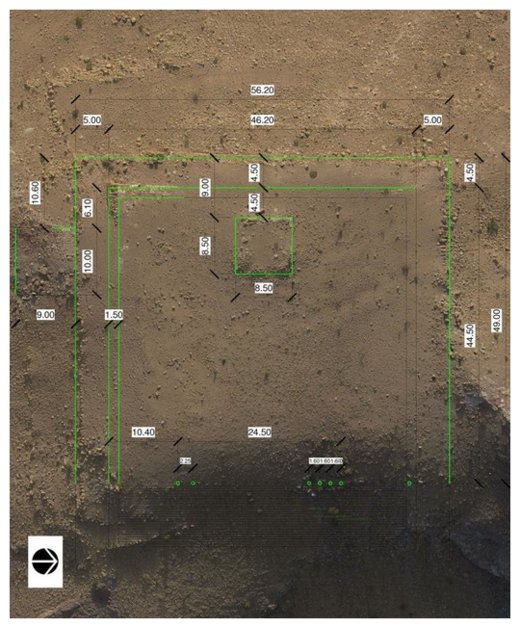
Archaeologists Sarah Parcak, a National Geographic fellow, and Christopher Tuttle, executive director of the Council of American Overseas Research Centers, used high-resolution satellite imagery followed by aerial drone photography and ground surveys to locate and document the structure.
They report that the monument is roughly as long as an Olympic-size swimming pool and twice as wide. It sits only about half a mile (800 meters) south of the center of the ancient city.
The enormous platform has no known parallels to any other structure in Petra.The caravan city of Petra, in what is today southern Jordan, served as the capital of the Arab tribe known as the Nabataeans from its likely founding in the mid-second century B.C. The site was essentially abandoned at the end of the Byzantine period in the seventh century A.D.
Hundreds of thousands of tourists visit its iconic buildings, hewn from the local red sandstone, each year.
The entire Petra Archaeological Park covers about 102 square miles (264 square kilometers), but the city's center encompasses an area of only 2.3 square miles (6 square kilometers).
As evidenced by the latest discovery, while the hinterlands north and south of Petra's ancient city center have been well surveyed since explorer Johann Burckhardt arrived in 1812, new discoveries continue to be made around its urban core.

The newly revealed structure consists of a 184-by-161-foot (about 56-by-49-meter) platform that encloses a slightly smaller platform originally paved with flagstones. The east side of the interior platform had been lined with a row of columns that once crowned a monumental staircase.
A small 28-by-28-foot (8.5-by-8.5-meter) building was centered north-south atop the interior platform and opened to the east, facing the staircase.
This enormous open platform, topped with a relatively small building and approached by a monumental facade, has no known parallels to any other structure in Petra. It most likely had a public, ceremonial function, which may make it the second largest elevated, dedicated display area yet known in Petra after the Monastery.
This new discovery may be a unique public monument from the city's early years.
While the monument has not been excavated, the presence of surface pottery dating from the mid-second century B.C. suggests that construction of the structure began during the Nabataeans' initial public building program.
Most of the monuments that can be seen in Petra today, such as its iconic Treasury and the Monastery, were built during its second heyday, from the end of the first century B.C. to the second century A.D. The city had already been around for a century or more by that time, notes Tuttle, which may make the new discovery a unique public monument from the city's early years.
In describing the find, Tuttle hails the use of satellite and drone imagery for providing archaeologists with the broad aerial perspectives that enable them to identify the faint footprints of ancient buildings, and then understand how historical monuments and sites relate to each other across the landscape.
"I'm sure that over the course of two centuries of research [in Petra], someone had to know [this site] was there, but it's never been systematically studied or written up," says Tuttle. "I've worked in Petra for 20 years, and I knew that something was there, but it's certainly legitimate to call this a discovery."



Reader Comments
to our Newsletter